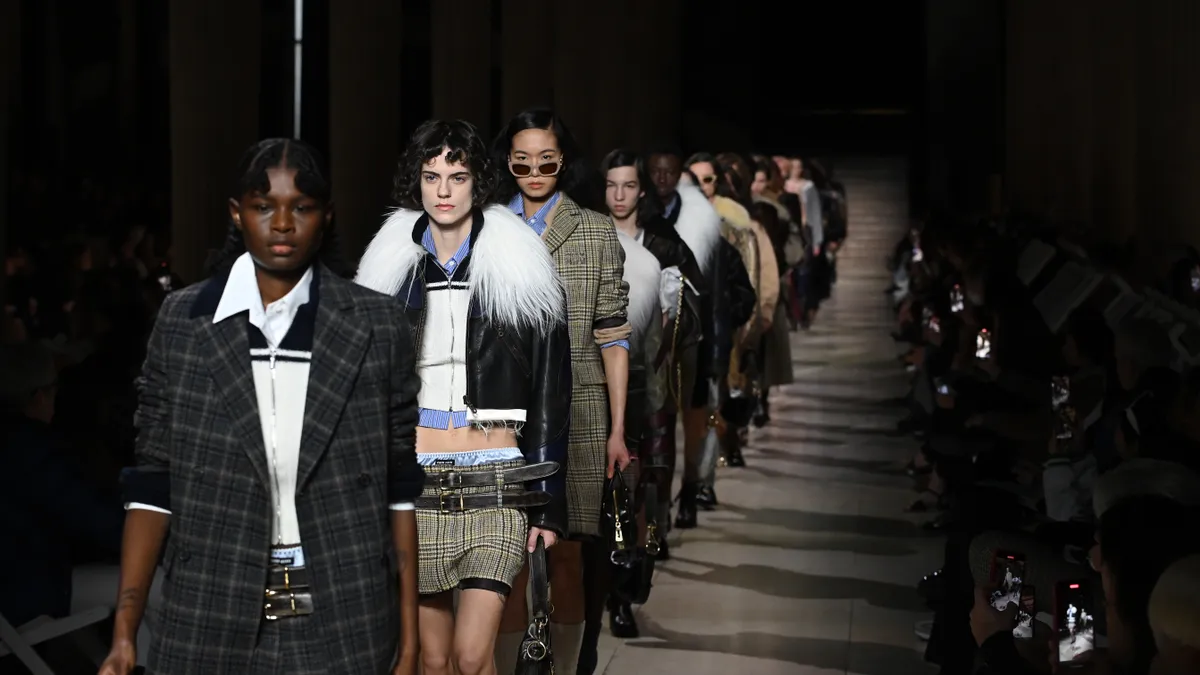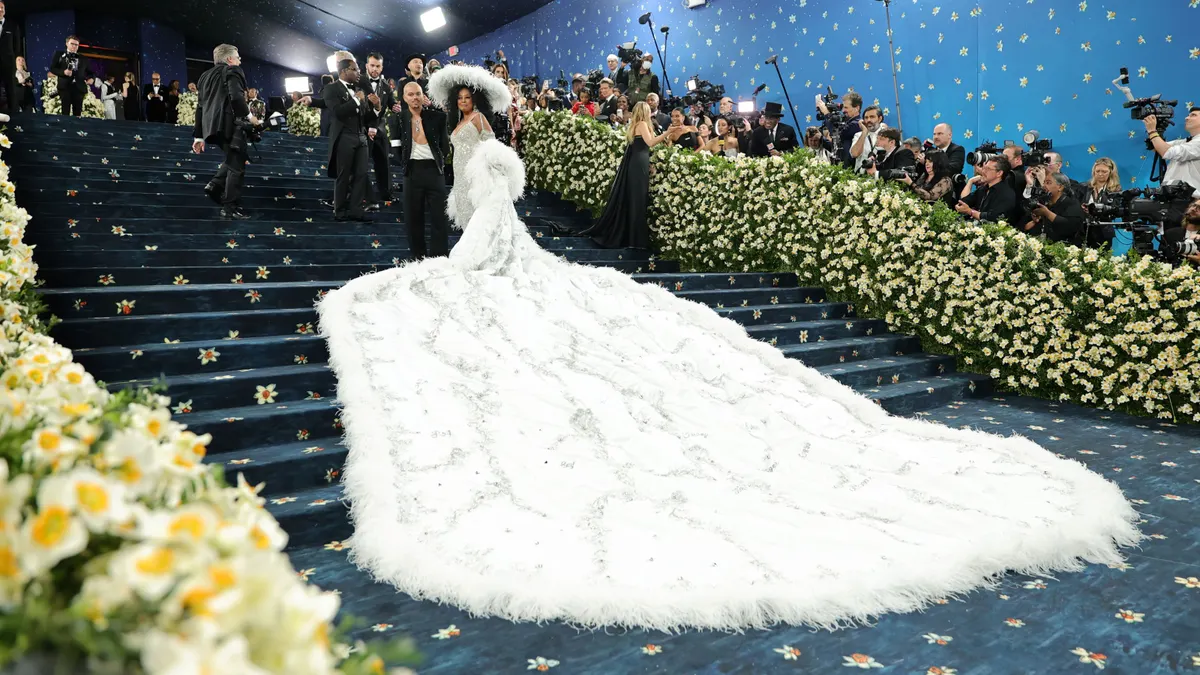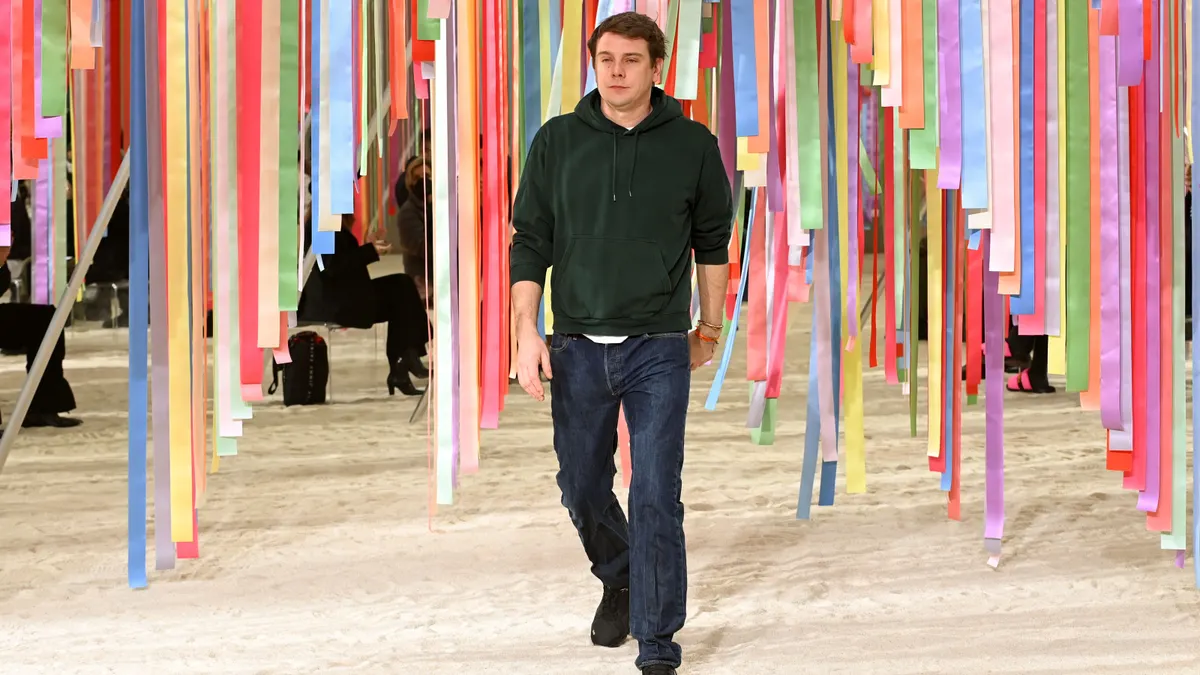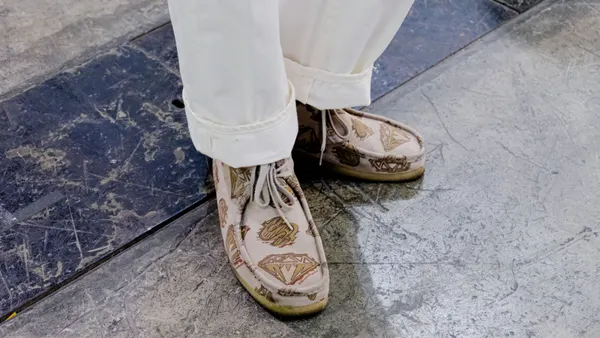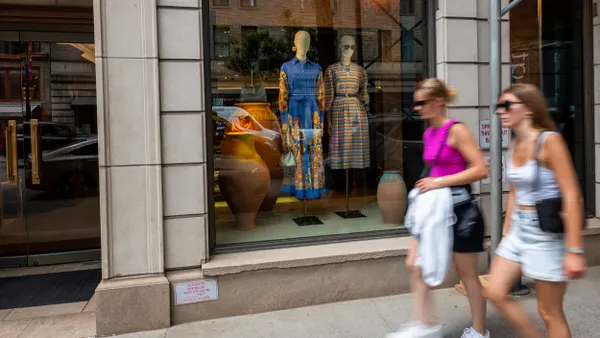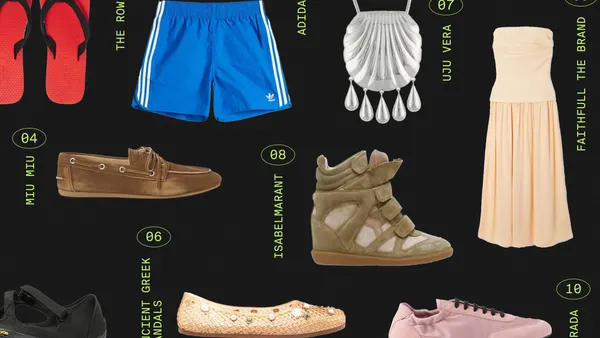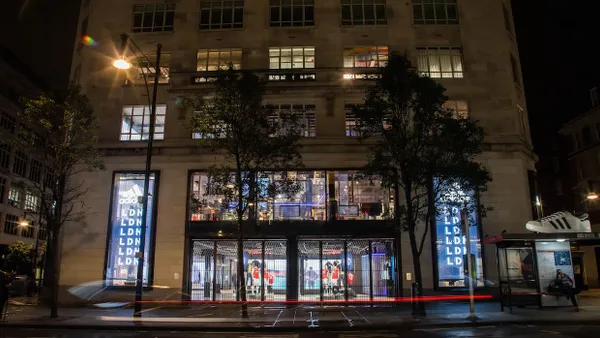Dive Brief:
- Miu Miu, Bottega Veneta and Prada are the top three brands embracing new rules for luxury, according to an annual report from Highsnobiety released Monday.
- Successful brands working under these rules are embracing story-centered collaborations rather than product-driven ones and looking for tangible ways to drive inclusivity in their messaging to build fandom, per the report. Brands are also embracing influencer brand representatives over celebrity endorsements and not adhering to traditional fashion schedules.
- As the luxury fashion sector grapples with changes in consumer spending patterns, Highsnobiety said brands need to target their audience through several different channels because social media has made culture “more fragmented than it has ever been.”
Dive Insight:
The report, New Luxury’s New Rules, examines the state of the “new luxury” apparel industry. Its findings represent new standards within the luxury sector, such as challenging traditional fashion week schedules and changing the norms of which people it chooses to star in a successful marketing campaign.
Highsnobiety gathered results from people it refers to as Cultural Pioneers, or early adopters of trends that function as “barometers of where culture is heading” based on their involvement with fashion style and culture. The new report surveyed about 1,000 such people globally. The group skews younger and buys more luxury goods than the general public, per the report.
Highsnobiety's first New Luxury report in 2018 identified luxury as more associated with brand knowledge than with cost.
In the current report, Highsnobiety said this concept still holds true, but how this knowledge is gained and shared is different due to changing norms online. Now, fans can access and share a brand’s lookbook images on Instagram, which the report specifically noted happened with the work of Aime Leon Dore. As a result of the new rules, Highsnobiety noted that brands are gaining fans who have never bought a product from the brand before.
“Today, the codes and stories a brand puts out into the world—its visuals, products, campaigns and content—are no longer taken as they are, they’re adopted and repackaged into a never ending array of online mood boards, curated IG pages and starter pack memes to form worlds and references outside a brand’s control,” the report states.
Celebrity and brand partnerships aren’t as effective as they used to be because“micro-influencers” are on the rise, the report stated. Micro-influencers have smaller followings but serve a specific interest, and consumers expect to be both informed and entertained by them, per the report.
Collaborations, and the stories brands tell around them, can help a brand be noticed, per Highsnobiety.
“Collaborations are no longer product initiatives, they are desirability initiatives,” the report stated. “And, while a great collab can always deliver, we have been in the era of ‘collaboration saturation’ almost since our New Luxury exploration began, hence, the need to think more broadly about about the purpose of a collaboration.”
Last year’s trend of collaboration between luxury designers and mass market retailers is expected to continue in 2024. These collaborations challenge traditional perceptions and are a way to reach new consumer groups, Fashion Dive previously reported.
The Highsnobiety report noted a change in traditional fashion schedules. While events like the Met Gala and Fashion Weeks still get attention, smaller events, like after parties for large scale functions, are just as important. Brands are also bypassing fashion’s traditional schedules of waiting to present lines at various fashion weeks, which Highsnobiety said allows brands to generate more coverage and attention. The report used Phoebe Philo’s highly anticipated label release in October, which quickly sold out, as an example of such rejection.
The report additionally points to a need for more inclusion in the luxury industry, with 53% of respondents saying the industry “excludes and ignores minorities.” Brands that demonstrate change in the traditional luxury model are those which speak directly to overlooked communities. It named Telfar and Sinead O’Dwyer as brands that have become more inclusive in terms of price and size, respectively, creating access to more people, which Highsnobiety said also helped boost fandom around the brands. Telfar has also come to be known as “Bushwik Birkins” due to their limited availability, and the brand has also been seen as a mode of connection within the Black community.
“Inclusion is a core part of their brand DNA,” the report stated.



